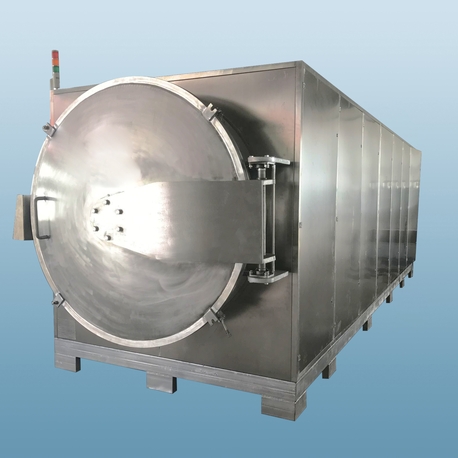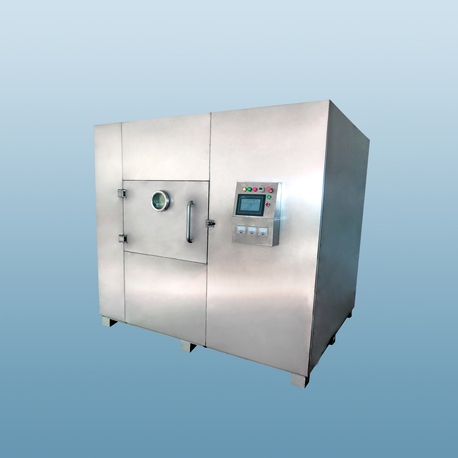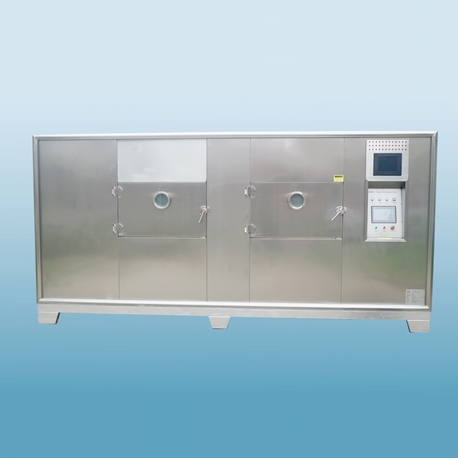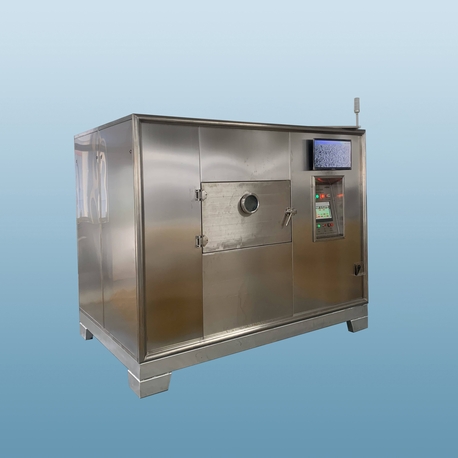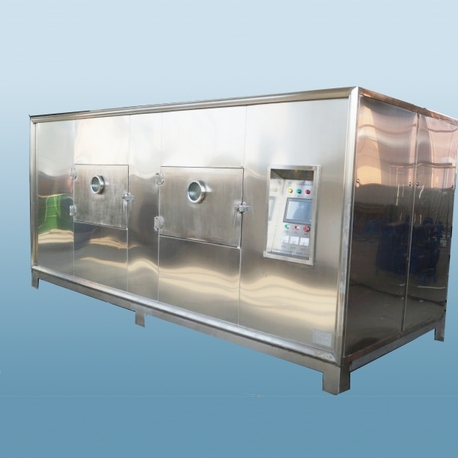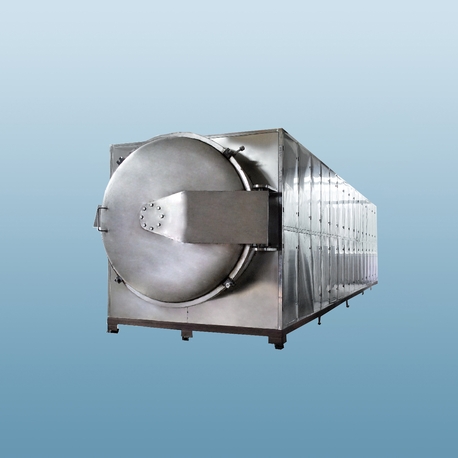In the vast landscape of industrial processing, the efficient removal of moisture is a fundamental step that dictates product quality, shelf life, and overall operational efficiency. At the heart of this crucial process lies the industrial dryer, a workhorse machine designed to handle massive volumes of materials across countless sectors. From transforming wet pharmaceutical powders into stable tablets to ensuring breakfast cereals have the perfect crunch, industrial dryer systems are indispensable. The global market for these machines is expanding, driven by demands for higher efficiency, lower energy consumption, and smarter control systems. This comprehensive guide delves into ten critical aspects of industrial dryer technology, providing a detailed overview for engineers, plant managers, and procurement specialists looking to optimize their drying operations. Understanding the intricacies of these systems is not just about removing water; it's about enhancing product value, reducing costs, and ensuring process reliability on an industrial scale.
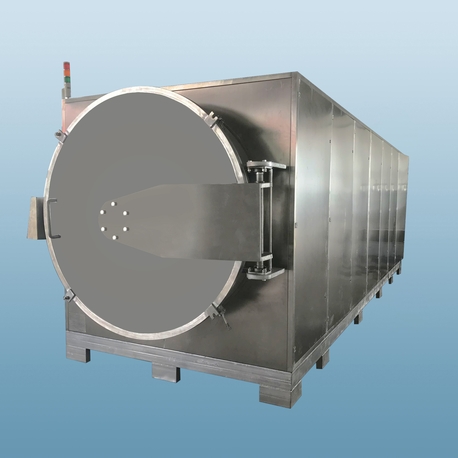
What is an Industrial Dryer and Why is it Fundamental to Modern Manufacturing?
An industrial dryer is a engineered system designed to remove moisture or other volatile liquids from solid materials, slurries, or gases through the application of heat and the controlled movement of air or another gas. Unlike common domestic dryers, these are heavy-duty, high-capacity machines built for continuous or batch operation in demanding environments. The core principle involves transferring heat to the wet material, which causes the moisture to evaporate, and then removing the resulting vapor.
The fundamental importance of the industrial dryer in modern manufacturing cannot be overstated. It is a pivotal unit operation that directly impacts:
Product Quality: Proper drying determines critical attributes like texture, color, flavor, and chemical stability. Over-drying or under-drying can render a product unsellable.
Shelf Life and Preservation: By reducing the water activity, drying inhibits the growth of microorganisms like bacteria and mold, significantly extending a product's shelf life. This is vital for food, pharmaceuticals, and animal feed.
Downstream Processing: Many manufacturing processes require materials to be in a dry, free-flowing powder form for subsequent steps like tableting, packaging, or pelletizing. An efficient industrial dryer ensures these conditions are met.
Transportation Efficiency: Removing water reduces the weight and volume of materials, leading to substantial savings in storage and transportation costs.
Waste Management: Dryers are used to process bio-solids from wastewater treatment plants, turning them into a manageable, often usable, fertilizer or fuel.
Exploring the Diverse Types of Industrial Dryers: Choosing the Right Technology
There is no one-size-fits-all industrial dryer. The selection depends entirely on the material's characteristics and the desired end product. The industry offers a wide array of technologies, which can be broadly categorized.
Convective Dryers: These are the most common type, using hot gas (typically air) as both the heat source and the moisture carrier. They are excellent for thermally stable materials.
Spray Dryers: A liquid or slurry is atomized into a hot gas chamber, producing a dry powder in seconds. Ideal for milk, eggs, coffee, and detergents.
Fluidized Bed Dryers: Hot air is blown through a perforated bed of granules, causing them to fluidize and behave like a liquid. This ensures uniform drying and high heat transfer. Common in chemicals, pharmaceuticals, and food.
Tray Dryers (Cabinet Dryers): Materials are spread on trays in an enclosed cabinet. Heated air is circulated over them. Suitable for batch processing of smaller quantities or materials that are fragile.
Conductive (Contact) Dryers: These dryers transfer heat through a solid surface (like a jacket or hollow screw) in contact with the material, with minimal gas flow. They are often more energy-efficient and suitable for dusty or solvent-laden environments.
Drum Dryers: A liquid or paste is applied to a rotating, steam-heated drum. The dried material is scraped off as a film or flakes. Used for potato flakes, certain polymers, and animal feed.
Paddle Dryers: A jacketed trough with rotating paddles that mix and convey the material while heating it. Excellent for sludges, filter cakes, and viscous products.
Vacuum Dryers: Operating under reduced pressure, these dryers lower the boiling point of moisture, allowing drying at lower temperatures. Essential for heat-sensitive materials like pharmaceuticals and certain fine chemicals.
Radiant and Dielectric Dryers:
Infrared Dryers: Use electromagnetic radiation to directly heat the material's surface. Good for coatings and thin films.
Microwave Dryers: Microwaves generate heat within the material itself, leading to very fast and uniform drying. Used in specialized food and ceramic applications.
Key Applications of Industrial Dryers Across Major Industries
The application of industrial dryer technology spans nearly every processing sector. Its versatility is a testament to its critical role.
Food and Beverage: This is one of the largest application sectors. Industrial dryer systems are used for drying grains, fruits, vegetables, herbs, spices, pasta, yeast, and instant beverages. They help in preservation, creating convenience foods, and developing specific textures.
Pharmaceuticals and Biotechnology: Precision is paramount here. Dryers are used to produce active pharmaceutical ingredients (APIs), excipients, and final drug formulations. Strict hygiene standards (like cGMP) and the need to handle potent compounds make specialized industrial dryer designs like vacuum tray and fluid bed dryers essential.
Chemicals and Plastics: From drying polymer resins and pigments to catalyst powders and mineral concentrates, chemical plants rely on robust and often explosion-proof industrial dryer models. Consistency in moisture content is critical for subsequent chemical reactions and product performance.
Pulp and Paper: Large, conveyor-based or cylinder industrial dryer sections are used to dry paper webs after the forming and pressing stages, determining the paper's final strength and quality.
Wastewater Treatment: Centrifuged or filtered bio-solids (sludge) are dried to reduce volume, eliminate pathogens, and create a product that can be used in agriculture or incinerated for energy recovery.
Critical Factors to Consider When Selecting an Industrial Dryer
Selecting the wrong industrial dryer can lead to production bottlenecks, poor product quality, and excessive energy costs. A systematic evaluation is crucial.
Material Characteristics: This is the starting point. What are the material's initial and final moisture content? What is its heat sensitivity? What is the particle size and shape? Is it abrasive, corrosive, or explosive? The answers dictate the suitable dryer type.
Production Capacity and Mode: Does the process require continuous 24/7 operation or batch processing? The required throughput (kg/hour) will determine the size and scale of the industrial dryer.
Drying Kinetics: Understanding how the material dries—whether the process is constant-rate or falling-rate—helps in modeling the drying time and selecting the most efficient technology.
Energy Source and Efficiency: The cost of energy is a major operational expense. Options include steam, natural gas, electricity, or waste heat. The chosen industrial dryer should have high thermal efficiency, potentially featuring heat recovery systems.
Environmental and Safety Regulations: Emissions of dust and volatile organic compounds (VOCs) are tightly controlled. The industrial dryer may require integrated cyclones, bag filters, or scrubbers. For combustible materials, explosion venting or suppression systems are non-negotiable.
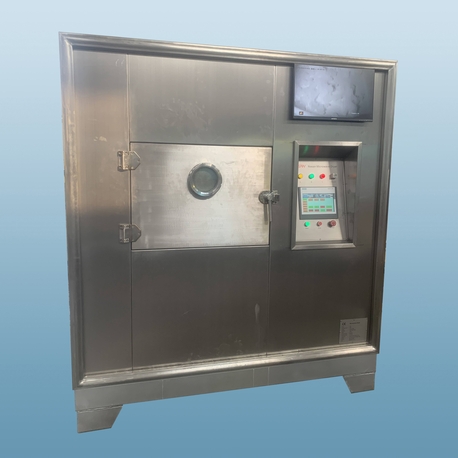
The Role of Automation and Control Systems in Modern Industrial Dryers
Modern industrial dryer systems are far from simple heating chambers. They are sophisticated pieces of equipment governed by advanced Programmable Logic Controllers (PLCs) and Supervisory Control and Data Acquisition (SCADA) systems. Automation plays a transformative role:
Precision Control: Automated systems precisely regulate critical parameters like inlet/outlet air temperature, airflow rate, fan speed, and drum rotation speed. This ensures consistent product quality batch after batch.
Energy Optimization: Control systems can modulate burner output or steam valves based on real-time feedback, minimizing energy consumption during partial load conditions.
Recipe Management: For batch dryers handling multiple products, automated systems can store and recall drying "recipes," ensuring perfect repeatability and reducing operator error.
Data Logging and Reporting: All process data is recorded, providing a complete batch history for quality assurance and regulatory compliance. This data is also invaluable for troubleshooting and process optimization.
Remote Monitoring: Many modern industrial dryer units offer connectivity for remote monitoring and control, allowing experts to diagnose issues and adjust parameters from anywhere in the world.
Energy Efficiency and Sustainability in Industrial Drying Operations
Drying is notoriously energy-intensive, often accounting for up to 15% of all industrial energy consumption. Therefore, improving the energy efficiency of an industrial dryer is both an economic and environmental imperative. Key strategies include:
Heat Recovery: Installing heat exchangers to capture waste heat from the exhaust stream and preheat the incoming fresh air can reduce energy consumption by 20-30%.
Insulation: Properly insulating dryer walls and ductwork minimizes parasitic heat losses to the environment.
Heat Pump Integration: Heat pump dryers are gaining traction, especially at lower temperatures. They dehumidify the drying air and recycle the latent heat of vaporization, offering energy savings of 50-70% compared to conventional convective dryers.
Combined Drying Technologies: Using a combination of technologies, such as microwave-assisted convective drying, can drastically reduce drying time and energy use.
Superheated Steam Drying: This advanced technology uses superheated steam in a closed loop. The exhaust is steam, which can be recompressed and reused, offering very high thermal efficiency, though it has a high capital cost.
Essential Maintenance and Safety Protocols for Industrial Dryers
To ensure longevity, reliability, and safe operation, a rigorous maintenance schedule for any industrial dryer is essential.
Preventive Maintenance: This includes regular inspection and replacement of wear parts like bearings, seals, and filters. Heating elements and burners must be checked for efficiency and safety. Electrical components and sensors require calibration.
Cleaning: Buildup of product dust or residue can not only reduce efficiency but also create a fire hazard. Regular cleaning schedules, potentially including Clean-in-Place (CIP) systems, are vital.
Safety Systems: Given the presence of heat, moving parts, and often combustible dust, safety is paramount. Key protocols include:
Lockout-Tagout (LOTO): Strict procedures for de-energizing and securing equipment during maintenance.
Explosion Protection: This can include pressure relief vents, explosion suppression systems, and inerting (purging with nitrogen) to prevent dust explosions.
Fire Protection: Integration with fire detection and sprinkler systems.
Guarding and Emergency Stops: All moving parts must be guarded, and easily accessible emergency stop buttons must be installed.
Innovations and Future Trends in Industrial Dryer Technology
The industrial dryer market is not static. It is evolving rapidly with several key trends:
Smart Manufacturing and IIoT: The Industrial Internet of Things (IIoT) is enabling "smart dryers." Sensors collect vast amounts of data, which is then analyzed by AI and machine learning algorithms to predict maintenance needs, optimize drying cycles in real-time, and prevent unplanned downtime.
Advanced Simulation: Computational Fluid Dynamics (CFD) is used to model and optimize dryer designs before a physical prototype is even built, leading to more efficient and effective machines.
Focus on Low-Temperature Drying: To preserve the quality of high-value, heat-sensitive materials like probiotics and certain vitamins, technologies like heat pump and vacuum freeze-drying are becoming more widespread.
Modular and Flexible Designs: Manufacturers are seeking dryers that can handle a wider range of products with quick changeover times, driving demand for more flexible and modular industrial dryer designs.
A Guide to Selecting a Reliable Industrial Dryer Manufacturer
Choosing the right supplier is as important as choosing the right technology. Key considerations include:
Industry Experience: Look for a manufacturer with a proven track record in your specific industry (e.g., food, pharma, chemicals).
Testing Capabilities: A reputable manufacturer will offer pilot-scale testing facilities. Testing your material in their lab is the best way to confirm dryer suitability and scale-up parameters.
Technical Support and Service: Evaluate their global service network, availability of spare parts, and responsiveness to technical queries.
Compliance with Standards: Ensure their equipment is designed and built in compliance with relevant international standards (e.g., ASME, ATEX, cGMP).
The industrial dryer is a cornerstone of modern process engineering, a complex piece of equipment whose selection and operation have far-reaching consequences for productivity, product quality, and profitability. From understanding the fundamental types and applications to embracing automation, energy efficiency, and rigorous safety, a holistic approach is necessary. As technology advances, the future industrial dryer will be smarter, more connected, and more sustainable. By carefully considering the factors outlined in this guide and partnering with a knowledgeable supplier, businesses can make an informed investment that will deliver reliable performance and maximize value for years to come. The right industrial dryer is not just a cost; it's a strategic asset.


